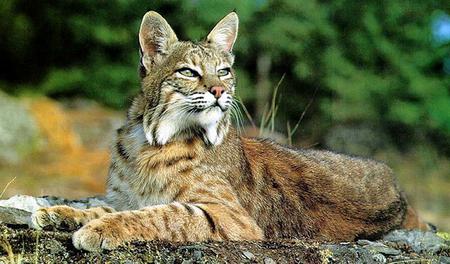
Bobcats are very secretive, solitary, and seldom seen by people in the wild. Bobcats are active during the day, but prefer to be crepuscular or nocturnal in habitats where they exists. Bobcats tend to travel well-worn animal trails, logging roads, and other paths. They use their acute vision and hearing for locating enemies and prey. Bobcats do not form lasting pair bonds. Mating can occur between most adult animals. In Wyoming, female bobcats reach sexual maturity within their first year but males are not sexually mature until their second year. Nationwide, breeding can occur from January to June. In Wyoming, breeding typically begins in February and the first estrus cycle in mid- March.
The gestation period in bobcats ranges from 50 to 70 days, averaging 62 days. Nationwide, young are born from March to July, with litters as late as October. The breeding season may be affected by latitude, altitude, and longitude, as well as by characteristics of each bobcat population. In Wyoming, births peak mid-May to mid-June and can occur as late as August or September. These late litters may be from recycling or late-cycling females, probably yearlings. In Utah, births may peak in April or May. In Arkansas, births may peak as early as March. Bobcats weigh about 2/3 pound at birth. Litters contain from 2 to 4 kittens. Kittens nurse for about 60 days and may accompany their mother through their first winter. Continue reading Bobcat Biology and Behavior